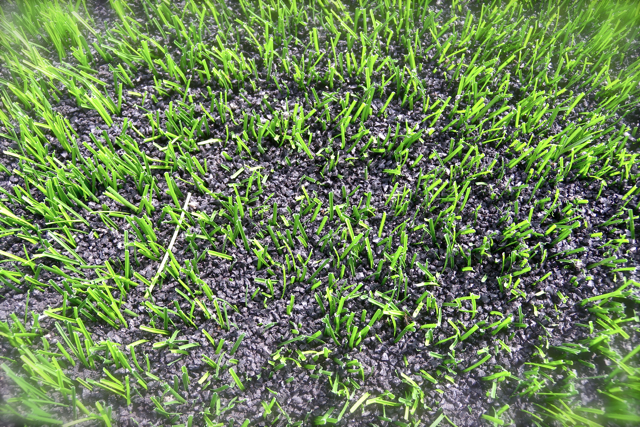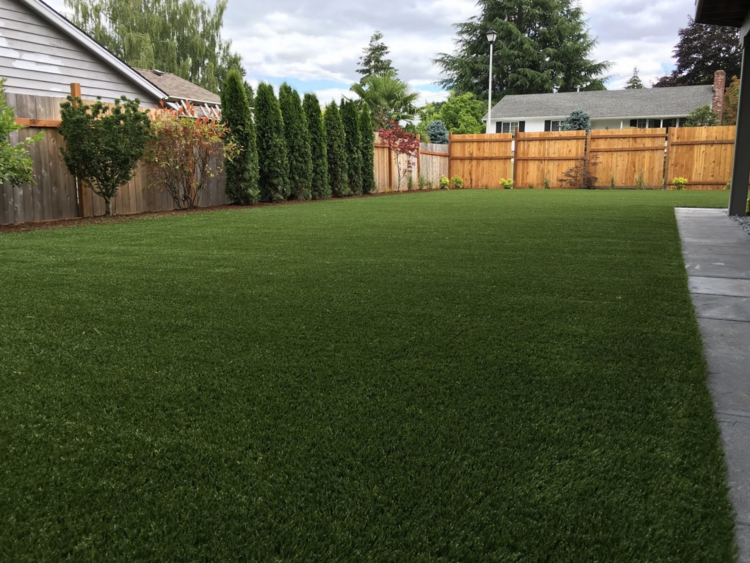Reliable Artificial Turf Companies Phoenix for a Beautiful and Evergreen Lawn
Reliable Artificial Turf Companies Phoenix for a Beautiful and Evergreen Lawn
Blog Article
Look Into the Environmental Benefits of Opting for Artificial Lawn Solutions
The fostering of fabricated lawn options provides an engaging opportunity to resolve pressing environmental obstacles. By substantially decreasing water usage and reducing the application of hazardous chemicals, these choices not only promote sustainable landscaping however likewise secure neighborhood ecological communities.
Water Preservation Benefits
One of the most significant advantages of synthetic grass is its capability to save water. In comparison, man-made lawn does not require watering, dramatically lowering the general need for water resources.
By eliminating the need for routine watering, synthetic grass contributes to lasting landscape techniques and aids alleviate the environmental influence of excessive water consumption. Furthermore, the conservation of water includes the decrease of runoff, which can bring about soil disintegration and river contamination.
Additionally, the setup of synthetic grass allows districts and house owners to assign water resources much more successfully, focusing on necessary usages such as drinking water and farming. The change in the direction of synthetic grass not only advertises liable water usage but additionally lines up with more comprehensive ecological goals aimed at preserving natural resources.
As neighborhoods increasingly prioritize sustainability, the water conservation advantages of fabricated lawn present an engaging case for its adoption in industrial and property landscape design tasks.
Reduced Chemical Usage
The transition to artificial turf dramatically lowers the dependence on chemical treatments frequently utilized in all-natural lawn maintenance. Conventional grass administration commonly entails the application of fertilizers, chemicals, and herbicides to advertise growth and control bugs. These chemicals can position risks to human health, local wild animals, and the environment, adding to dirt and water contamination.
In contrast, synthetic turf eliminates the need for these harmful compounds. By minimizing the launch of artificial compounds right into the community, fabricated grass advertises healthier dirt and water systems.
Moreover, the absence of chemical drainage connected with fabricated turf installments assists secure local rivers from pollution, supporting water life and keeping biodiversity. Phoenix turf companies. As areas progressively prioritize lasting practices, deciding for fabricated turf presents a viable solution that lines up with ecological conservation goals. Via this shift, homeowner can enjoy rich eco-friendly rooms without compromising environmental wellness, paving the method for an extra sustainable future
Lower Carbon Footprint

Moreover, the installment of artificial turf can lead to significant water preservation. Natural lawns need significant quantities of water for watering, which not just contributes to the carbon footprint related to water removal and therapy however additionally pressures regional water sources. On the other hand, synthetic grass needs minimal upkeep, requiring no watering, consequently substantially reducing water use and its associated power costs.
In addition, the longevity of synthetic grass adds to its decreased carbon effect. With a life expectancy of as much as 15 years or more, the requirement for regular replacements is decreased, leading to less waste and lower energy consumption in manufacturing and taking care of traditional turf options. Generally, synthetic grass offers a lasting option for environmentally aware landscape design.
Habitat Preservation
Environment conservation is an important factor to consider in the argument over landscaping selections, especially when comparing fabricated grass to natural yard. Natural grass yards usually need substantial maintenance, consisting of using plant foods, herbicides, and pesticides, which can detrimentally affect local communities. These chemicals can seep right into the read this post here soil and waterways, harming indigenous plants and fauna and disrupting neighborhood habitats.
In comparison, synthetic grass offers a possibility to minimize the environmental footprint of landscape design. By going with synthetic grass, property owners can minimize the interruption of natural environments related to conventional lawn treatment methods. Synthetic grass gets rid of the need for dangerous chemicals, therefore safeguarding nearby wildlife and maintaining the stability of bordering ecosystems. Moreover, the setup of synthetic grass great post to read can lead to the conversion of former lawn locations right into even more biodiverse landscapes, such as pollinator gardens or native plant areas, which can sustain neighborhood wild animals.
Eventually, the shift to fabricated lawn not only saves water and decreases upkeep initiatives yet also cultivates an extra harmonious partnership in between human activities and the native environment, advertising environment conservation in the procedure.
Long-Term Sustainability
Lasting sustainability is an important consider reviewing the benefits of man-made grass over standard lawn yards. One of the most considerable benefits of artificial lawn is its longevity; it can last approximately 15-20 years with very little maintenance, whereas all-natural turf requires regular reseeding and substitute. This longevity reduces the need for constant sources, such as water, Arizona artificial turf fertilizers, and chemicals, which are important for maintaining a healthy and balanced turf lawn.
In addition, synthetic grass adds to a decrease in carbon emissions related to lawn treatment equipment. Typical yards commonly need gas-powered lawn mowers, trimmers, and blowers, every one of which add to air pollution. Turf installation phoenix az. In comparison, synthetic grass eliminates the need for such tools, promoting a cleaner atmosphere
Moreover, the production of artificial turf progressively utilizes recycled materials, improving its sustainability account. As suppliers embrace environmentally friendly techniques, the environmental footprint of synthetic grass proceeds to decrease.

Conclusion
The fostering of synthetic grass solutions presents substantial environmental benefits, including substantial water preservation, minimized reliance on harmful chemicals, and a reduced carbon footprint. Synthetic grass help in protecting all-natural environments by minimizing land disturbance and advertising lasting sustainability through the usage of durable materials. Collectively, these aspects emphasize the possibility of synthetic grass to contribute favorably to ecological health and use a viable option to traditional landscaping techniques in a progressively resource-conscious globe.
In comparison, synthetic grass does not require watering, considerably lowering the overall need for water resources. By lessening the launch of synthetic substances into the ecosystem, man-made turf advertises healthier dirt and water systems.
Additionally, the setup of artificial grass can result in considerable water preservation. In contrast, synthetic grass requires very little upkeep, calling for no watering, therefore significantly reducing water usage and its associated energy costs.

Report this page